
Spanish Moss Growing on a Florida Tree Stock Image Image of branches, spanish 81480875
A botanical garden within the forest of trees. Tall, mature Australian tree ferns live happily under the cover of their natural protection mixed with friendly neighbors of native saw palmettos, ferns and ti plants. This water feature is one of many throughout the gardens. A waterfall feature trickles with the soothing sounds of falling water.

Mesmerized by Stunning, Spooky Spanish Moss Hanging from Ancient Trees
Technically Spanish moss is a bromeliad, a relative of pineapples. Of course, it does not resemble what most of us think of as a bromeliad, but in truth it is in the same taxonomic family. More.

Focus Stacked Image of Spanish Moss Hanging from a Live Oak Tree in Florida Stock Image Image
Mosses and Lichens commonly seen in Florida habitats. Menu; Skip to right header navigation ; Skip to primary navigation; Skip to secondary navigation. such as pale greenish-gray Cladina evansii and yellowish Cladina subtenuis are lumped under the colloquial name of deer moss. Footer. FIND A TRAIL OR PARK. NORTHWEST FLORIDA Apalachicola.

An old Oak tree with Spanish Moss in Buford, SC.....beautiful if you've ever seen them. Old
Epiphytes do attach themselves to plants, but they do not harm the plants, unlike mistletoe, a plant parasite. "Air" plants get their common name from the fact that they get all of their nutrients from the atmosphere. Most species of Tillandsia have thin, stiff leaves covered in scales, often giving them a fuzzy, gray-green appearance.
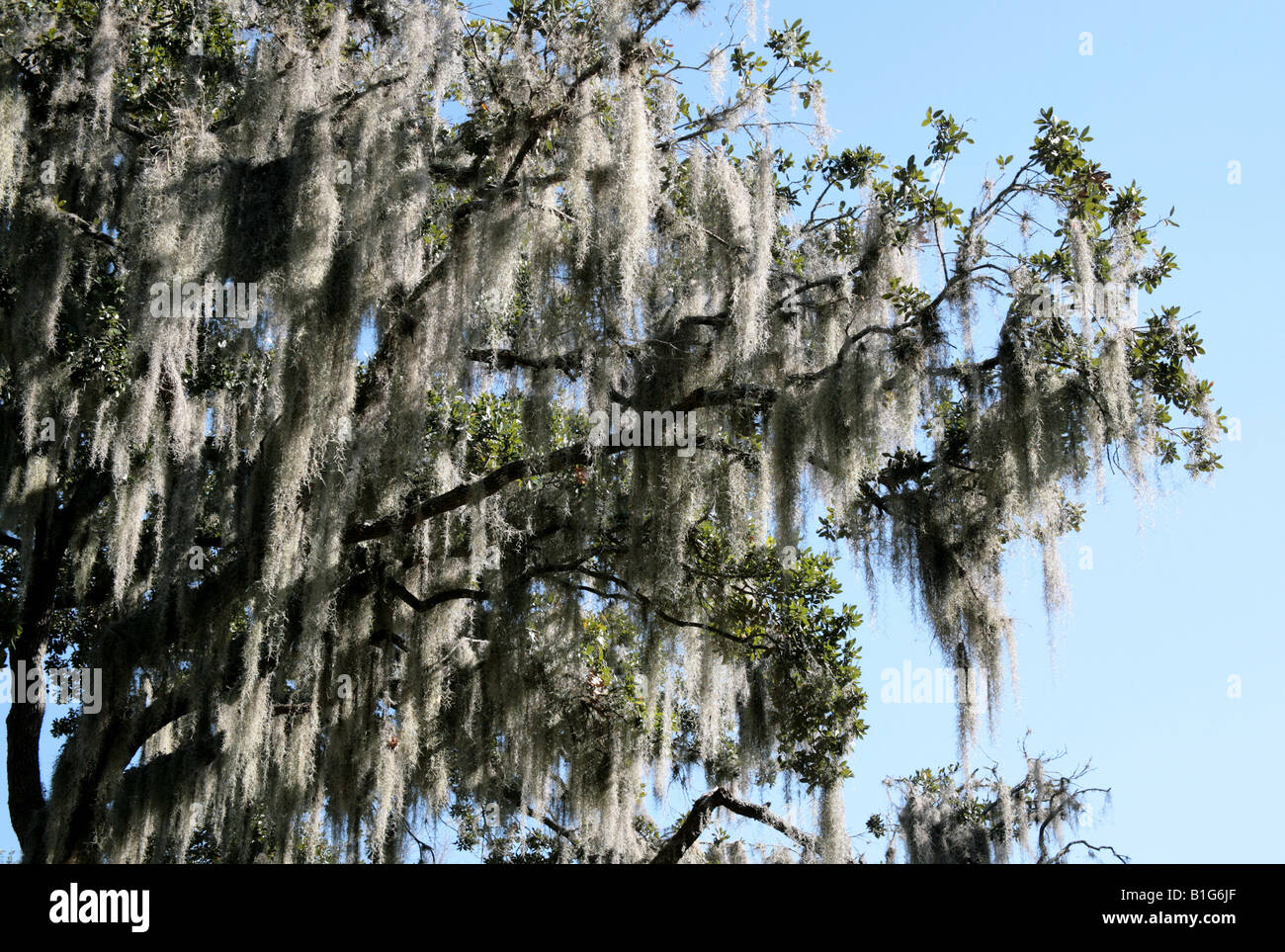
Spanish moss growing on trees at Central Florida Lake Dora location Stock Photo Alamy
Trees in Florida have hanging Spanish moss because it is a common epiphyte that thrives in the warm and humid climate of the region. Spanish moss colonizes tree branches and trunks, using them as support structures while obtaining nutrients and water from the air and rainfall.

Spanish Moss Hanging from Trees at Lake Kissimmee Park, Florida. Stock Image Image of inland
Spanish moss is a real product, answering a real need ai. promising to furnish a commodity in permanent demand. Moss-bearing forests in Florida are very spotted ai. widely scattered. Cypress swamps and riversides are prolif. in moss production, but much of it is out of reach on t, trees with no low limbs for climbing.

An Oak Tree with Hanging Moss Near Heritage Park, Winter Haven, Florida, U.S Stock Photo Image
Moss is a non-vascular flowering plant, an epiphyte that grows on Florida trees. Most commonly, you'll find Spanish moss, ball moss, and lichens on your Florida trees. If you see moss on your tree, you don't need to remove it unless the weight of the moss is putting pressure on the tree branch.
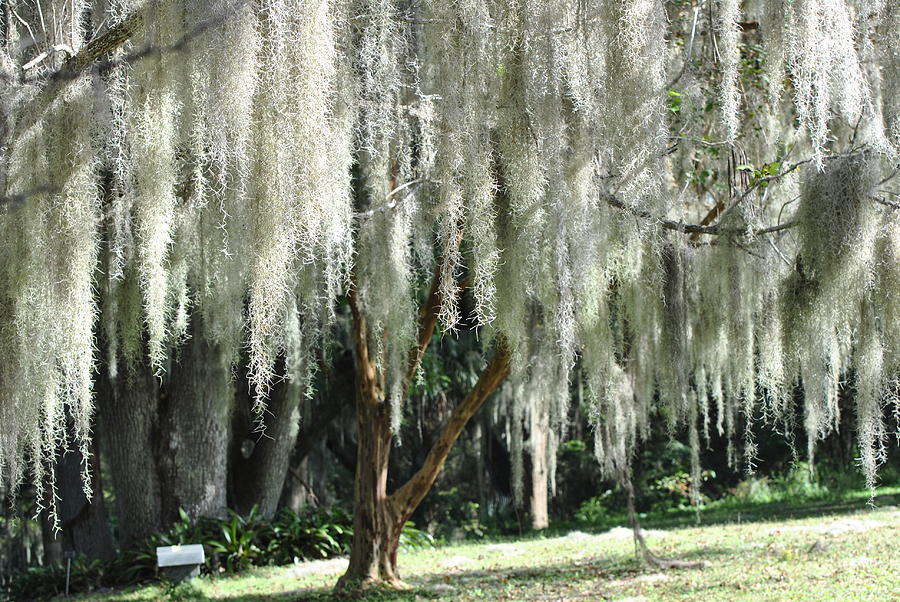
Beautiful White Spanish Moss Hanging From Trees Photograph by Jodi Terracina
Spanish moss, ball moss, and lichens are the most common mosses found on Florida trees. You don't need to remove moss off your tree unless the weight of the moss is putting strain on a tree branch. Tree Moss in Florida: Why it Happens and What To Do When You See It Moss on Tree branch
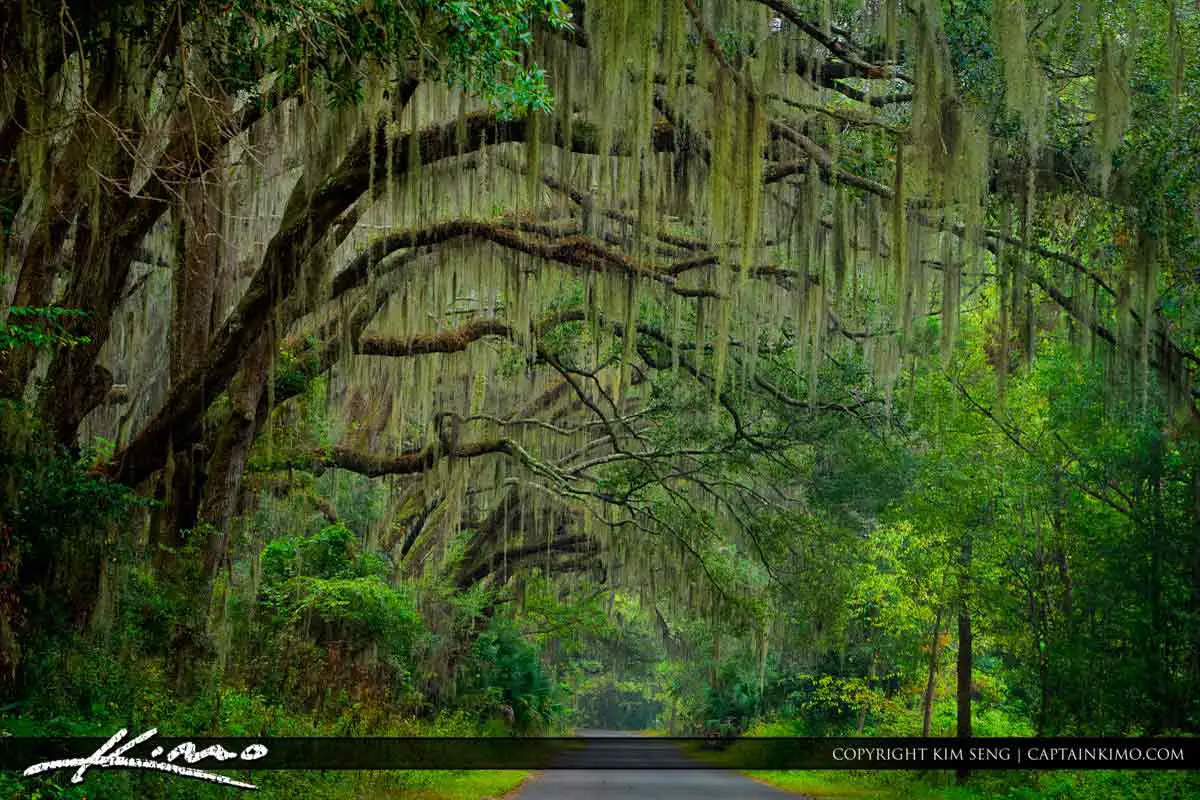
Everything You Need to Know About Tree Moss in Florida Environment Buddy
two-thirds of the Florida Peninsula, from Volusia County south. Ball-Moss (Tillandsia recurvata) Ball moss is extremely common in Florida, though it is not as conspicuous as Spanish moss. Ball moss is frequently found on the smaller twigs of trees and shrubs in bright sunlight. Under the right conditions, it may also grow directly on tree trunks,
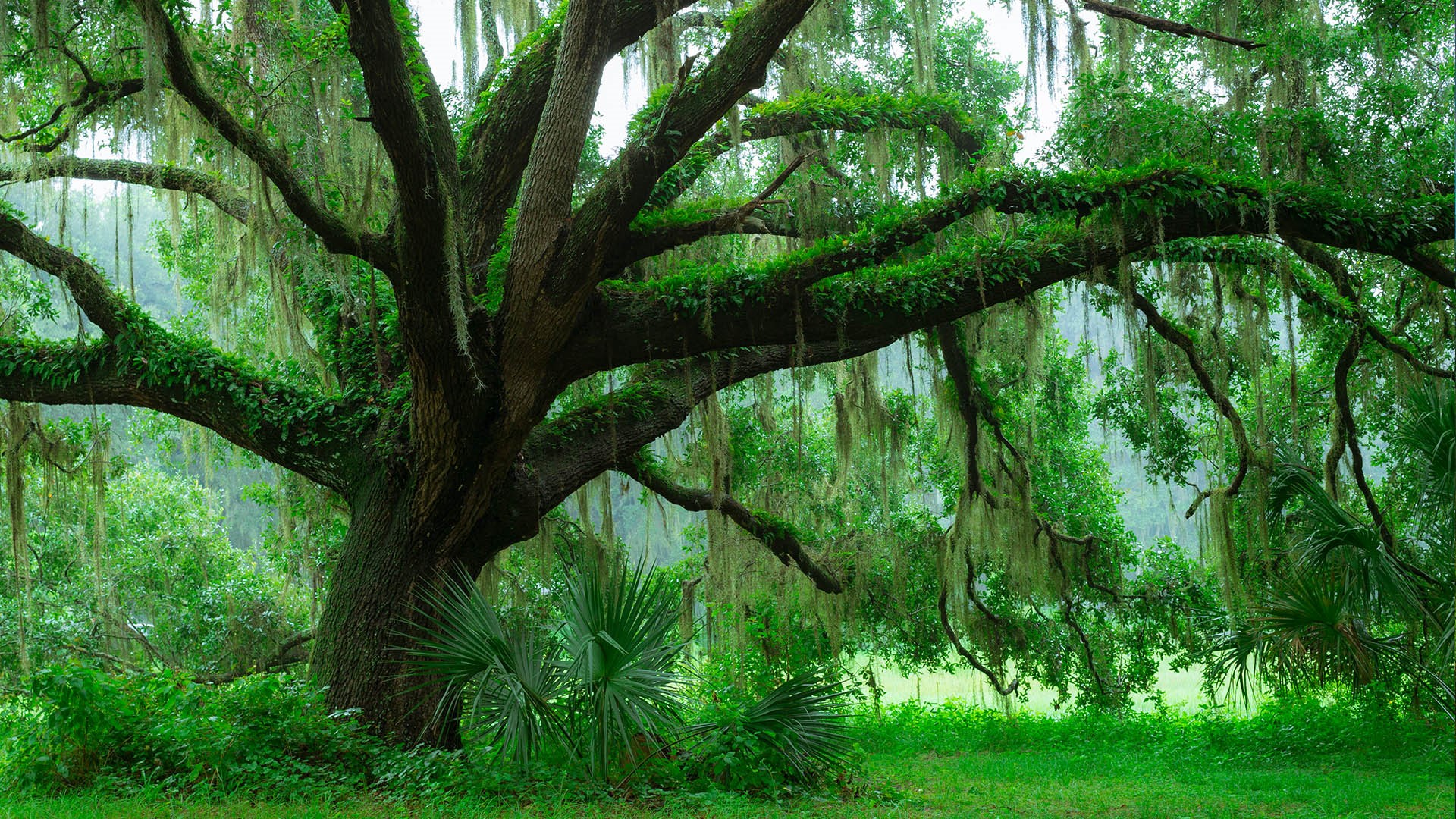
Moss on Southern Live Oak tree (Quercus Virginiana), Central Florida, USA Windows Spotlight Images
20 Florida Trees with Moss 1. Live Oak (Quercus virginiana) 2. Southern Red Cedar (Juniperus virginiana) 3. Bald Cypress (Taxodium distichum) 4. Spanish Moss (Tillandsia usneoides) 5. Sabal Palm (Sabal palmetto) 6. Southern Magnolia (Magnolia grandiflora) 7. Sweetgum (Liquidambar styraciflua) 8. Pond Cypress (Taxodium ascendens) 9.

Tree Moss in Florida Why it Happens and What To Do Tree Journey
Moss is a nonvascular flowering plant, an epiphyte that grows on oak trees. In most cases, moss does not need to be removed from a healthy oak tree. Unless moss is abundant on your oak tree, moss is rarely the cause of significant oak tree damage and can be monitored and left alone.
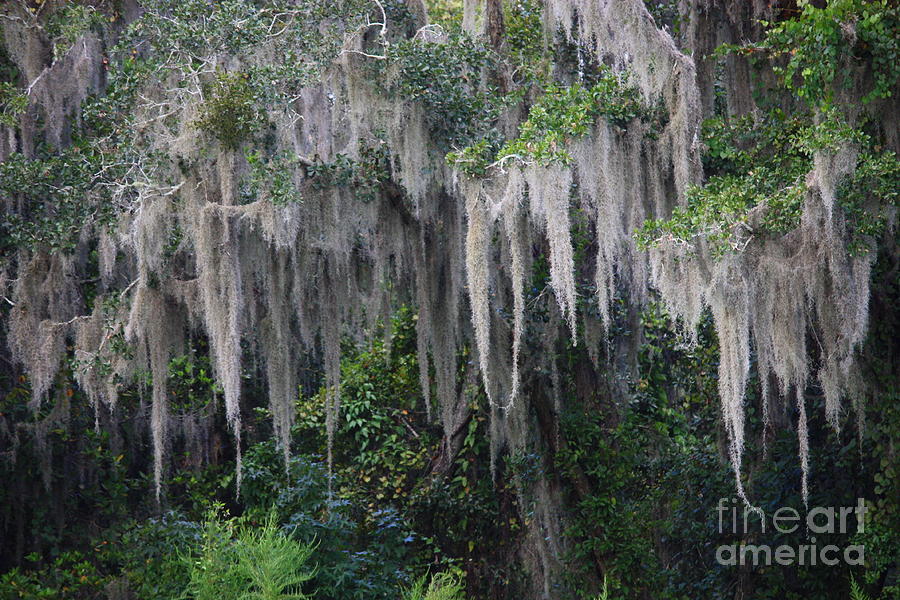
Florida Mossy Tree Photograph by Carol Groenen
The grey hanging plant, commonly called Spanish Moss, is also called Florida Moss (in Florida), or tree moss. The grey moss you see on trees does not harm the trees, and gives a really nice aged look seen in old Florida and Georgia movies. Can you keep the moss in your home?

Spanish Moss in Northern Florida Photograph by Kathy Horn
Spanish moss inhabits a number of tree species throughout the southeastern U.S. to Texas as a perennial in U.S. Department of Agriculture plant hardiness zones 8 through 11, wrapping around its hosts without rooting.
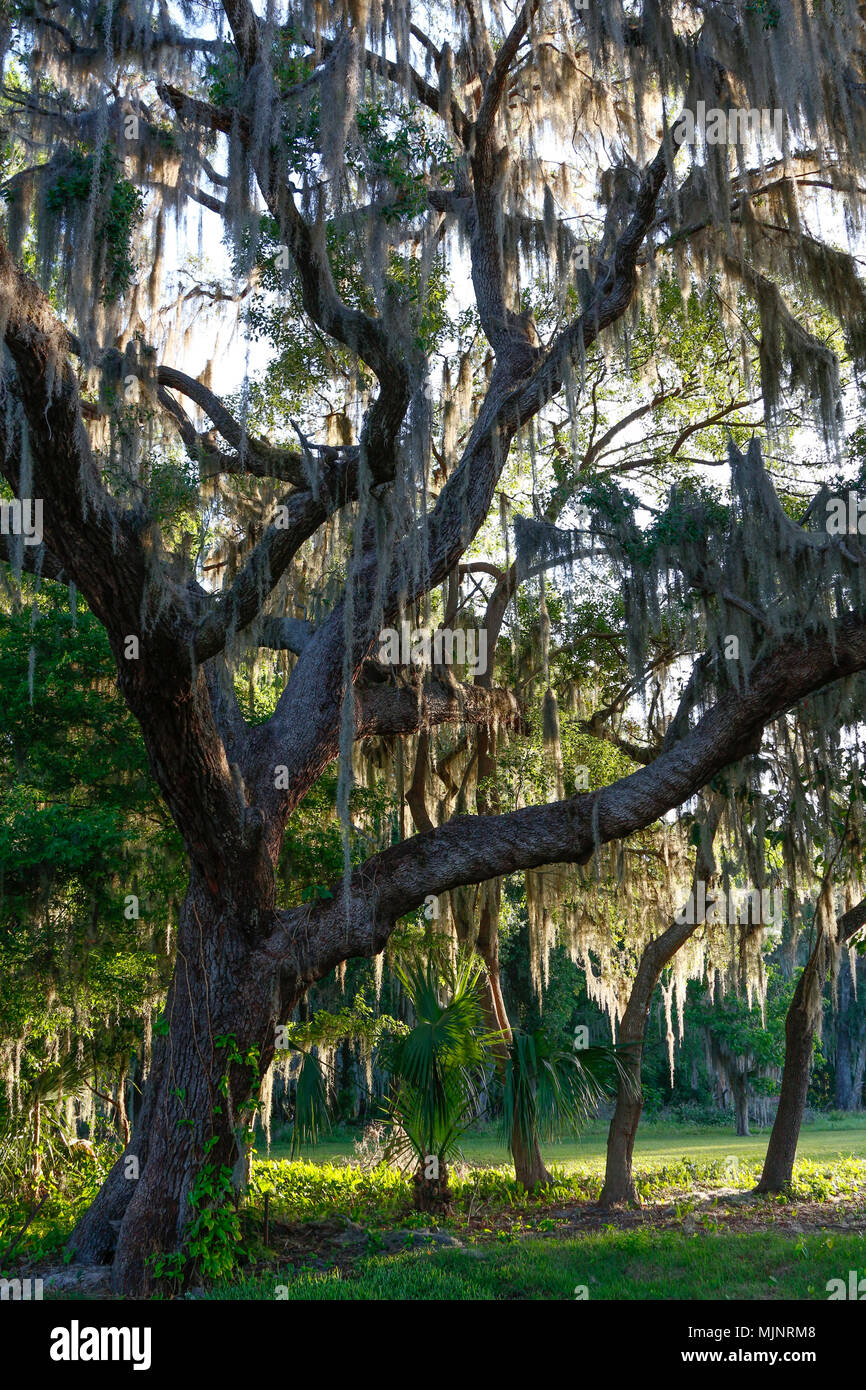
Spanish moss hanging from trees in central Florida Stock Photo Alamy
Several epiphytic plants, like Spanish moss, ball moss, and lichen, are common to the Florida landscape and southeast United States. People unfamiliar with epiphytes sometimes worry that they may injure the plants they perch in. Epiphytes attach themselves to plants, but they do not harm the plants, unlike mistletoe, a plant parasite.

Florida tree moss swamp stock photo. Image of moss, tree 169550518
Learn about the diversity, ecology, and identification of the mosses of central Florida in this comprehensive guide, which includes an interactive key, illustrations, and photos of over 100 species.

Spanish Moss Covered Oak Tree in Florida Stock Image Image of moss, nature 138067167
Leucobryum albidum Habitat: This moss is commonly found on both sandy and humus-rich soil in Florida. Distinct characteristics: In dry conditions, the multiseriate finger-like leaves are nearly paper white; when moisture is available, these mosses form thick green mats. Cool Fact: These are also known as cushion mosses. Octoblepharum albidum